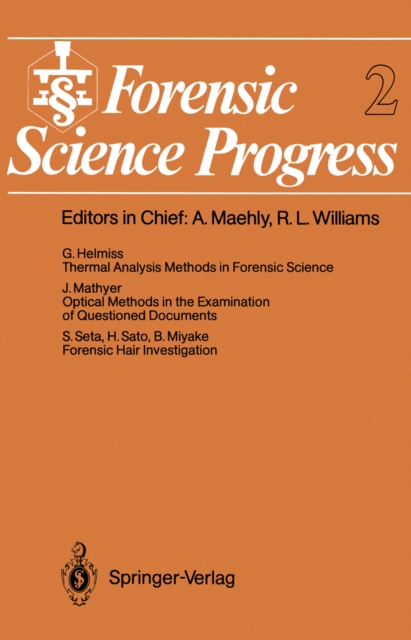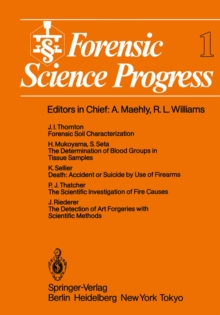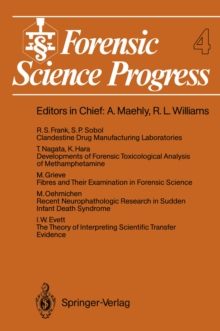
Forensic Science Progress PDF
Part of the Forensic Science Progress series
Description
Thermal analysis methods have been introduced into forensic sciences only in recent times.
Though thermoanalytical instruments have been available commercially for some decades it was not until the beginning of the seventies that forensic scientists became interested in them.
At that time some state forensic science laboratories in the Federal Republic of Germany made use of differential thermal analysis for forensic soil investigations.
The forensic science section of the city police of ZUrich, Switzerland, applied an instrument (differential thermal analysis and thermogravimetry) for various purposes.
Investigations of fibers by means of differential scanning calorimetry were reported by the Centre of Forensic Sciences at Toronto, Canada, and on the characterization of candle-waxes by differential thermal analysis by the Metropolitan Police Forensic Science Laboratory, London, England.
Later on some other insti- tutions like the Bundeskriminalamt at Wiesbaden, Germany, or the Home Office Central Research Establishment at Aldermaston, England, purchased instruments for one or more of the following thermal analysis methods: differential thermal analysis or differential scanning calorimetry, thermogravimetry, and thermomechanical analysis. .
But even now thermoanalytical instruments are not widespread in forensic science institutes and knowledge of their forensic potential seems to be limited.
In the following chapters we will give a survey of the most important thermal analysis methods mentioned above, and on current forensic applications and/or fields of actual research efforts.
Information
-
Download - Immediately Available
- Format:PDF
- Publisher:Springer Berlin Heidelberg
- Publication Date:06/12/2012
- Category:
- ISBN:9783642694035
Information
-
Download - Immediately Available
- Format:PDF
- Publisher:Springer Berlin Heidelberg
- Publication Date:06/12/2012
- Category:
- ISBN:9783642694035










